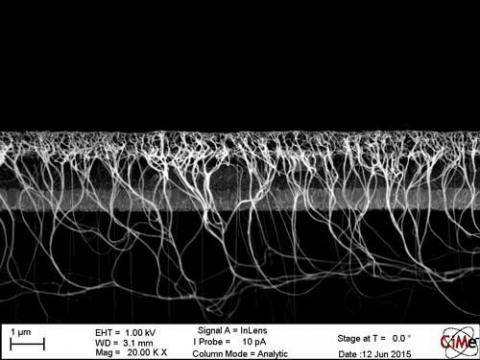Researchers from Aalto University, Uppsala University and Ãcole polytechnique fédérale de Lausanne (EPFL) in Switzerland have managed to improve the long term stability of perovskite-based solar cells by using a carbon nanotube film to replace the gold used as the back contact and the organic material in the hole conductor.

To conduct the study, thick black films with high conductivity were used in the back contact of the solar cell where light does not need to get through. Nanotube films can also be made transparent and thin, which would make it possible to use them as the front contact of the cell. The solar cells were prepared in Uppsala and the long-term stability measurement was carried out at EPFL.
The team explains that "in a traditional perovskite solar cell, the hole conductor layer consists of organic material and, on top of it, a thin layer of gold that easily starts to disintegrate and diffuse through the whole solar cell structure. We replaced the gold and also part of the organic material with films made of carbon nanotubes and achieved good cell stability in 60 degrees and full one sun illumination conditions".